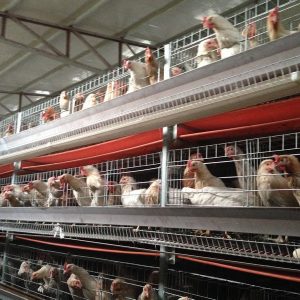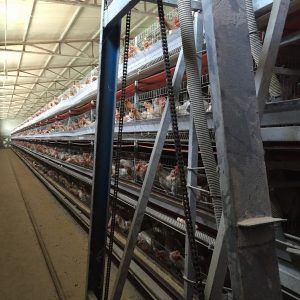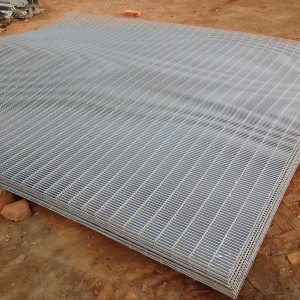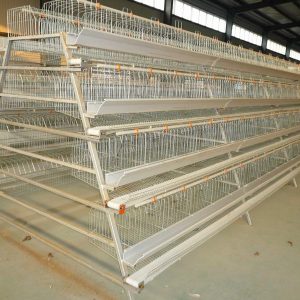
What are the main aspects of cockfighting breeding technology
In recent years, with the continuous improvement of people’s living standards, the space for development and utilization of cockfighting has become more and more promising. In the future, the development of cockfighting will not only stop at the ornamental value, but also pay attention to the development of its nutritional value. This provides a broader breeding prospect for cockfighting breeding. So what aspects of cockfighting breeding technology mainly include?
What are the main aspects of cockfighting breeding technology?
1. Breeding good breeds: the male fighting cock is required to have a large and strong body, a thick and strong neck, a thick and tall leg, a well-developed breast muscle, a bright red comb with a flat tumor shape, large eyes, close feathers, majestic posture, weight over 3.5 kg, female The cockfighting cock has a well-proportioned structure, is well-developed, lively and has big eyes, and weighs more than 2.5 kg.
2. Do a good job in epidemic prevention: Only by keeping the fighting cock in a healthy posture can it be conducive to domestication and reproduction. Therefore, disease prevention and control work must be done in the spring. The pen must be kept clean, and Baidu or Sterilin can be used every week (1 : 1000 times) spray disinfection once, the disinfectant can be sprayed on the fighting cock, the trough and the water tank are brushed with 0.1% potassium permanganate solution once a day, and the Newcastle disease vaccination should be done. After preventive immunization, it is necessary to observe the response of the flock after immunization at any time. For example, Newcastle disease chickens continue to appear after immunization with Newcastle disease vaccine; respiratory symptoms worsen after immunization with infectious bronchitis, which indicates that the immunization has failed. It is necessary to find the cause from many aspects as soon as possible and take active remedial measures.
3. Scientific ingredients: Cockfighting grows fast, has strong activity ability, and consumes a lot of energy. Therefore, the nutritional content should be comprehensive, crude protein should be more than 23%, and essential amino acids should be complete. The feed formula for young cockfighting is: corn 5%, bean cake 16%, Sorghum 5.5%, fish meal 8%, shell meal 2%, bone meal 1.5%, salt 0.5%, additives 0.5%, and some green food such as vegetable leaves.
4. Feeding management: regular water supply for food every day, and always maintain sufficient clean drinking water. It is necessary to tame and tame the fighting regularly. You can tie 50-100 grams of sandbags on your legs during tame. You must keep tame for 2 hours and tame for 1 hour every day, so as to train a cock with agility and tenacious combat ability. . Cockfighting consumption is relatively stable. If there is a decrease in consumption or only drinking water but not eating, it may indicate that the chicken has been infected with some diseases. The cause should be found out and treated as soon as possible.
Precautions for breeding cockfighting
Fighting cock breeders combine feeding, watering, and spreading chickens every day, and inspect the chicken coops, observe the food, drinking water, and feces of the cockfighting to know the status of the chickens at any time, find problems early, and deal with them early. During the inspection, the following ten aspects should be paid attention to.
1. Harmful gases: The most harmful gases to cockfighting are ammonia and hydrogen sulfide. Ammonia: It is a highly volatile and irritating gas. If a large amount of ammonia is produced in the chicken house, it will be the first to be sensed when entering the chicken house. When you smell ammonia, it means that the ammonia in the chicken house has already exceeded the standard. Hydrogen sulfide: The specific gravity is larger than that of air. It is a gas with the smell of rotten eggs. It often accumulates on the ground. The closer it is to the ground, the higher the concentration. If you smell hydrogen sulfide in the higher part of the chicken house, it indicates that the hydrogen sulfide in the chicken house has exceeded the standard. From these changes, it can be determined whether there is excessive hydrogen sulfide in the air: the surface of the copper appliance suddenly turns black. White deposits appeared on the surface of galvanized iron. Black art paint fades in color. Carbon monoxide: It is a kind of odorless gas, especially in chicken coops insulated with coal stoves. Carbon monoxide poisoning of personnel and chickens should be prevented. When these three kinds of harmful gases are found to be excessive, corresponding measures should be taken immediately, such as appropriately increasing the ventilation and replacing the litter, so as to reduce the harm to the chicken.
2. Temperature Temperature is very important when raising fighting cock. Especially small chicks. Looking at the degree of dispersion, you can also find that the temperature is high or low. When the cockfights get together, and the density is high, the temperature is low. Fighting cock far away from the heat source, scattered around, indicating that the temperature is too high. Check the indoor thermometer, you can directly find the temperature. When the temperature on the thermometer is found to be inconsistent with the actual required temperature, measures must be taken to raise or lower the temperature immediately, and the temperature must be controlled within the required range.
3. Ventilation Good ventilation is the key to successful breeding. In the cold winter, the temperature is low, and often only pay attention to keeping warm and ignore the ventilation. When well ventilated, the cockfighting is lively and active, and there is no peculiar smell in the house, showing a feeling of comfort. Once the cockfighting cock is found to be sluggish, breathing slightly, the house is very smelly and dusty, ventilation should be strengthened immediately. When ventilating, be careful not to blow the cold air directly onto the cock.
4. Feces The feces of normal cockfighting are soft, light gray strips with a little white urate on them. Once the stool color changes or bloody stools appear, it is a sign of disease. Infectious bursal disease and infectious bronchitis can cause chickens to produce diarrhea and yellow-white feces; green, yellow-white watery feces are discharged when cockfighting suffers from Newcastle disease; bloody stools appear in the house, indicating that coccidiosis is infected by cockfighting. When the above abnormal feces are found, the chicken that defecates should be found and treated in isolation.
5. Humidity Humidity should also meet the standard. Microorganisms are easy to survive in high humidity, if accompanied by low temperature, the hazard of low temperature will be more serious. If the humidity is low, the coop is dry, and fighting cock is prone to respiratory diseases, especially young chickens. Long-term dry conditions can dehydrate and weaken chicks. Therefore, the adjustment of humidity in the fighting coop should not be ignored.
6. The number of dead chickens During the growth of cockfighting, whether it is chicks, growing chickens or laying hens, a very small number of weak chickens may die every day due to various reasons, which is normal. Under normal circumstances, the mortality rate of chicks should not exceed 0.05%, that of bred chickens should not exceed 0.01%, and that of laying hens should not exceed 0.03%. If an excessive number of deaths is found, attention should be paid.
7. Light In addition to light for brooding, laying hens also need supplementary light. In addition, pay attention to the intensity of the light.
8. Sound: Under normal circumstances, chickens will not make abnormal sounds. When certain diseases occur, such as infectious bronchitis, chronic respiratory disease and Newcastle disease, sick chickens will cough.



